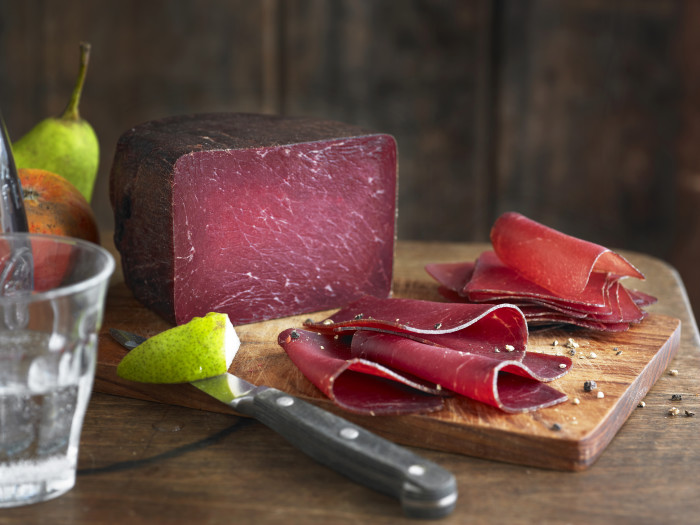History
Mountains and valleys.
Where Bündnerfleisch is cured.
There is a shimmering light which caresses sun-scorched haystacks, renders mountain lakes transparent and makes sheer wooded slopes look like they are covered in green velvet – that is the magic of Grisons. Here in the Swiss Alps, at an altitude of between 800 and 1,800 metres above sea level, a delicacy has been made since time immemorial – Bündnerfleisch.
Production first started at a time when the winter months were hard and long and there was no path leading to the remote mountain villages. In order to ensure that there was enough to eat during this period of privation, it was necessary to stock up on supplies. In autumn, after the descent of the cattle from the Alps, the farmers killed some of their stock, invited the locals to ‘Metzgeten’ (butcher’s night) and served their guests kidneys, livers and black pudding (the highly perishable offal).
However, the best and leanest pieces of beef were cured with salt, pepper, garlic, juniper and bay leaves, before being hung up in front of their houses to dry. The constant wind, which blows along the valleys, dried the meat and preserved it for several months.
